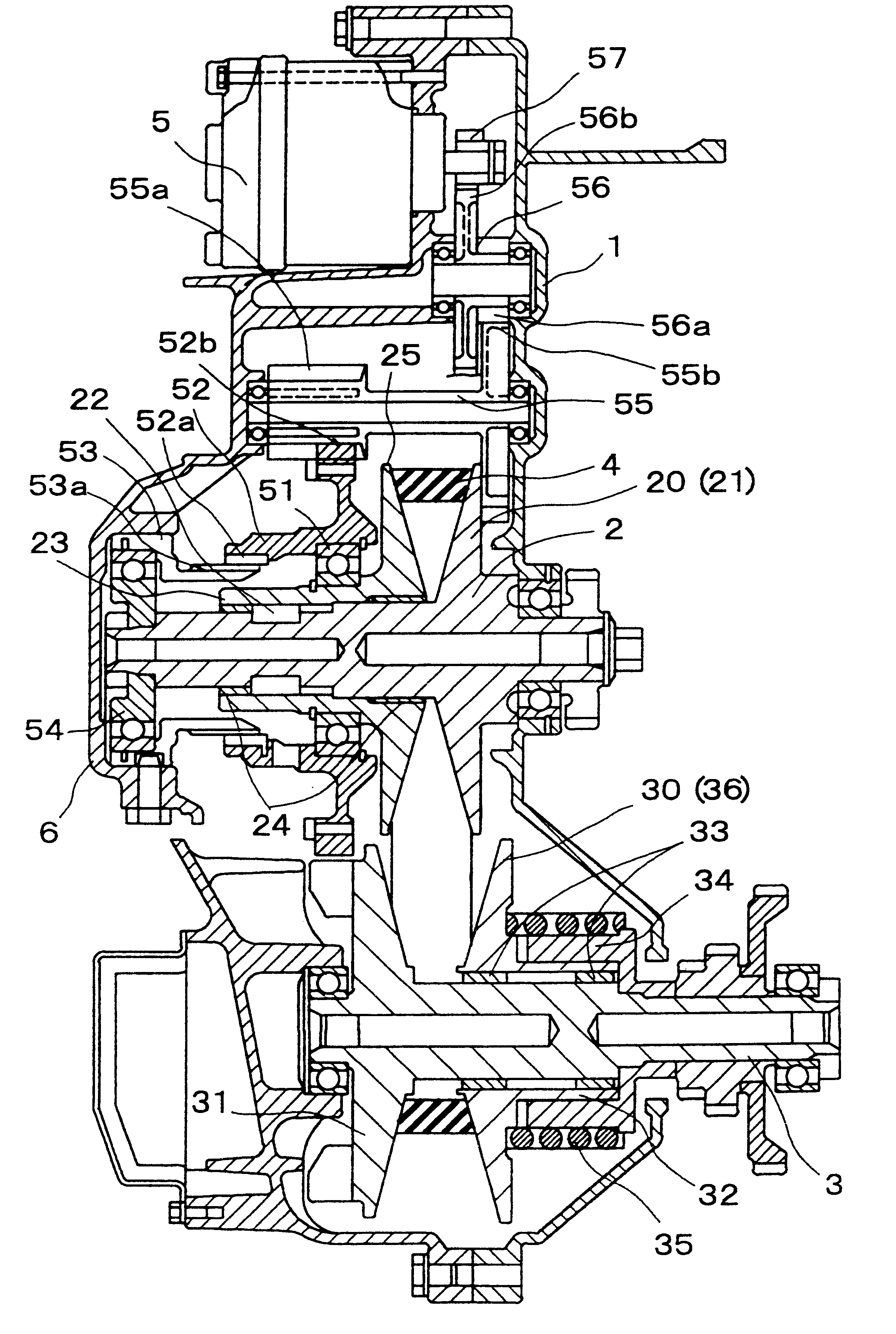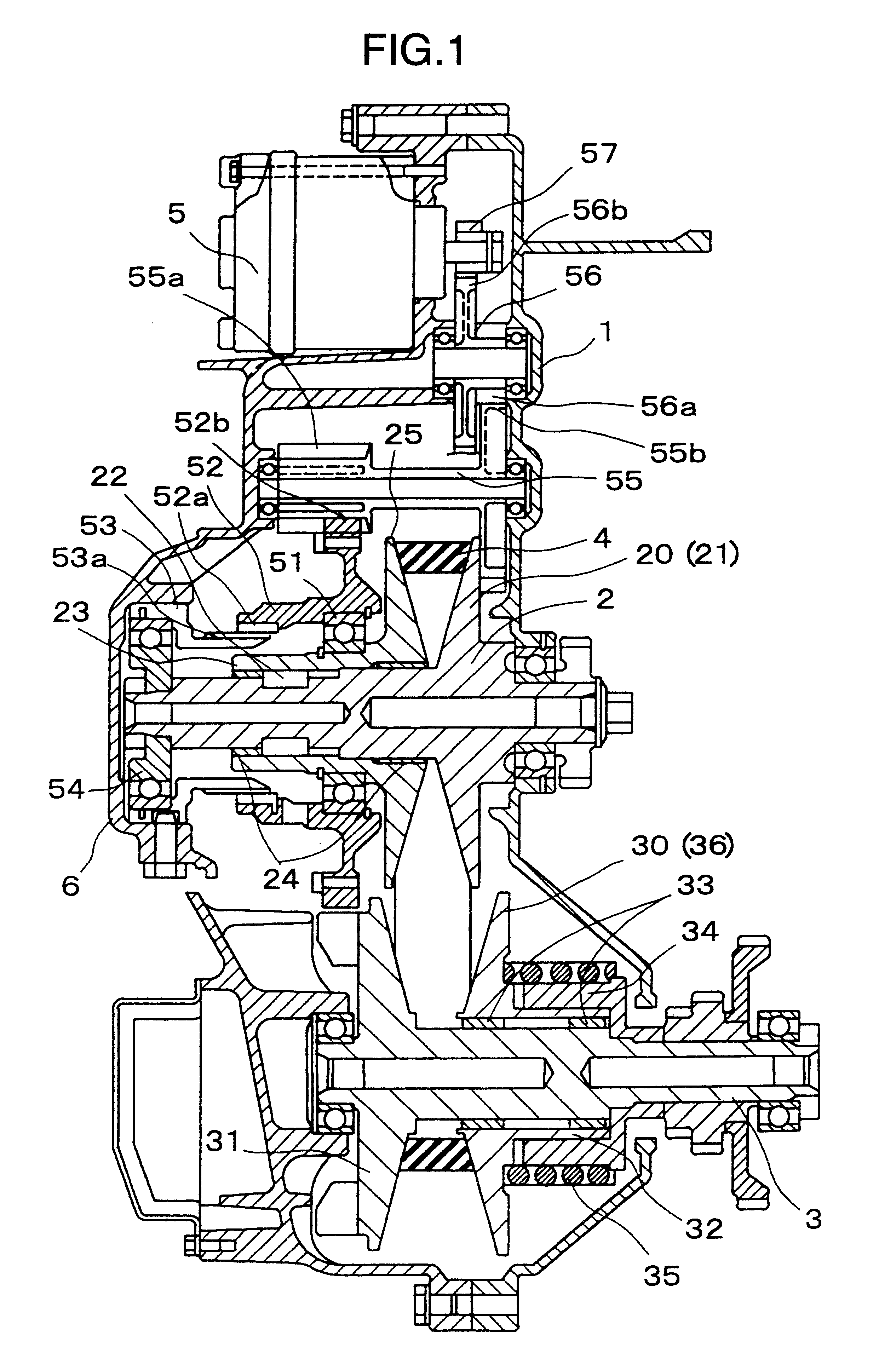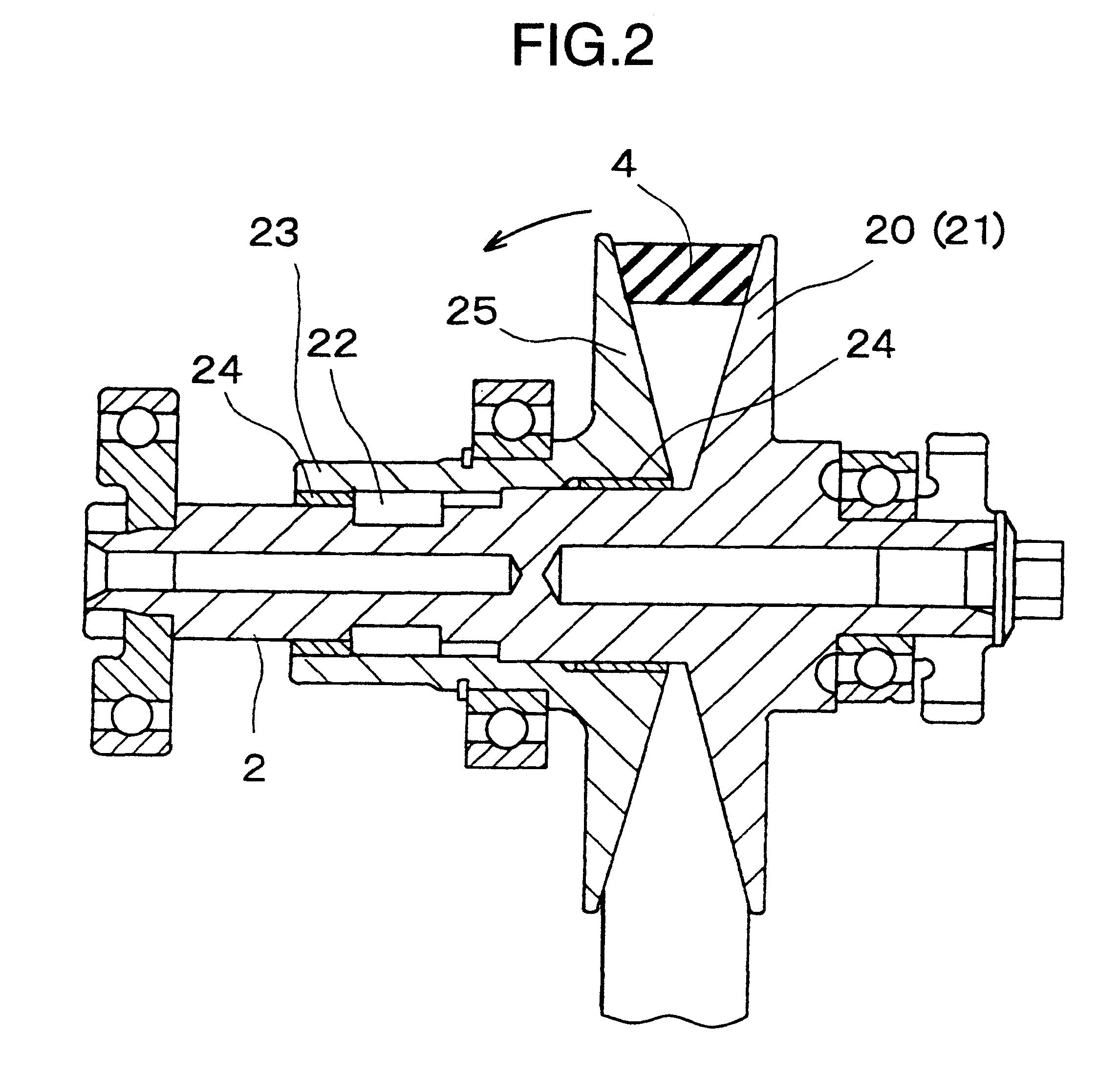Bearing structure
a technology of bearing surface and resin layer, which is applied in the direction of gearing, mechanical equipment, hoisting equipment, etc., can solve the problems of unsatisfactory bonding force between the shaft or the bearing surface and the resin in some cases, unsatisfactory wear resistance and easy wear,
- Summary
- Abstract
- Description
- Claims
- Application Information
AI Technical Summary
Benefits of technology
Problems solved by technology
Method used
Image
Examples
examples 6 to 8
with no PTFE in the resin layer on the bearing sliding surface each show smaller coefficients of friction, and also show smaller wear losses on both shaft and bearing sliding surfaces than that of Comparative Example 1. Thus, the effect of PTFE contained in the resin layer on the shaft sliding surface is observable. The coefficient of friction is lowered with increasing content of PTFE in the resin layer on the shaft sliding surface, but at 10% by weight of PTFE (Example 6) or higher the improvement effect of the contained PTFE is not so remarkable, as compared with Comparative Example 1 containing no PTFE also in the resin layer on the shaft sliding surface. The wear loss does not change so remarkably and shows substantially the same value as 6 .mu.m or 7 .mu.m even against changing PTFE content from 10 to 50% by weight in the resin layer on the shaft sliding surface. On the other hand, the bearing wear loss gradually decrease with increasing PTFE content in the resin layer on the ...
examples 1 to 5
each contain 15% by weight of PTFE in the resin layer on the bearing sliding surface in contrast to Examples 6 to 8 and show a much lower coefficient of friction. Furthermore, both shaft and bearing wear losses are smaller and the effect of PTFE contained in the resin layer on the bearing sliding surface is remarkable. The coefficient of friction gradually lowers with increasing PTFE content in the resin layer on the shaft sliding surface, whereas the shaft wear loss does not change so remarkably against changing PTFE content from 10 to 50% by weight in the resin layer on the shaft sliding surface, where the shaft wear loss of Examples 2 and 3 are 4 .mu.m as a minimum. On the other hand, the bearing wear loss of Examples 3, 4 and 5 is 2 .mu.m as a minimum. Comparative Example 7 is a case containing 85% by weight of PTFE in the resin layer on the shaft sliding surface and shows a considerably large shaft wear loss such as 19 .mu.m.
examples 9 to 11
each contain 30% by weight of PTFE in the resin layer on the bearing sliding surface in contrast to Examples 6 to 8 and show most distinguished coefficients of friction. The shaft wear loss does not change remarkably against changing PTFE content from 10 to 50% by weight in the resin layer on the shaft sliding surface and shows small values such as 5 .mu.m and 6 .mu.m. The bearing wear loss also shows small values such as 6 .mu.m and 7 .mu.m.
It can be seen from the foregoing test results that a coefficient of friction can be made smaller and the shaft and bearing wear resistances can be improved by making the resin layer on the shaft sliding surface from a resin composition comprising PAI (polyamideimide resin) and at least 5% by weight of PTFE on the basis of the total resin composition and making the resin layer on the bearing sliding surface from a resin composition comprising PEEK (polyether ether ketone resin) and not more than 30% by weight of PTFE on the basis of total resin ...
PUM
| Property | Measurement | Unit |
|---|---|---|
| thickness | aaaaa | aaaaa |
| inner diameter | aaaaa | aaaaa |
| inner diameter | aaaaa | aaaaa |
Abstract
Description
Claims
Application Information
 Login to View More
Login to View More - R&D
- Intellectual Property
- Life Sciences
- Materials
- Tech Scout
- Unparalleled Data Quality
- Higher Quality Content
- 60% Fewer Hallucinations
Browse by: Latest US Patents, China's latest patents, Technical Efficacy Thesaurus, Application Domain, Technology Topic, Popular Technical Reports.
© 2025 PatSnap. All rights reserved.Legal|Privacy policy|Modern Slavery Act Transparency Statement|Sitemap|About US| Contact US: help@patsnap.com



